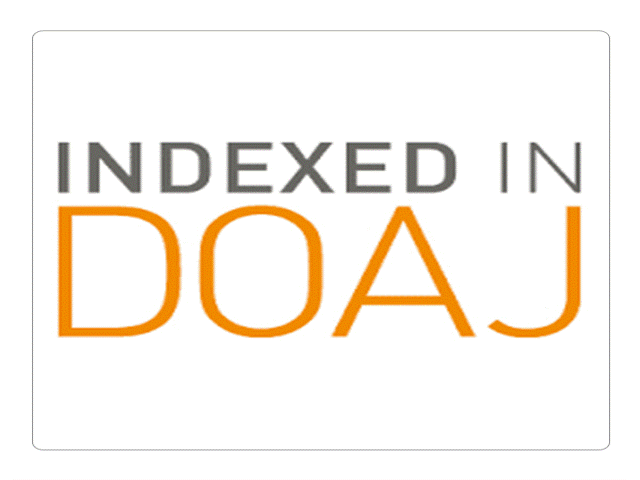THE PREDICTION OF HEART DISEASE USING MACHINE LEARNING ALGORITHMS
DOI:
https://doi.org/10.25271/sjuoz.2024.12.3.1270Keywords:
Machine Learning algorithms, Heart disease prediction, Cardiovascular disease prediction, Logistic Regression (LR), K-Nearest Neighbours (KNN), Support Vector Machine (SVM), Decision Tree (DT), Multi-Layer Perceptron (MLP), Random ForestAbstract
Heart disease threatens the lives of around one individual per minute, establishing it as the foremost cause of mortality in the contemporary era. A wide range of individuals over the globe has encountered the intricacies associated with cardiovascular illness. Various factors, such as hypertension, elevated levels of cholesterol, and an irregular pulse rhythm hinder the early identification of a cardiovascular disease. In cardiology, similar to other branches of Medicine, timely and precise identification of cardiac diseases is of utmost importance. Anticipating the onset of heart failure at the appropriate moment can provide challenges, particularly for cardiologists and surgeons. Fortunately, categorisation and forecasting models can assist the medical business and provide real applications for medical data.
Regarding this, Machine Learning (ML) algorithms and techniques have benefited from the automated analysis of several medical datasets and complex data to aid the medical community in diagnosing heart-related diseases. Predicting if the patient has early-stage cardiac disease is the primary goal of this paper.
A prior study that worked on the Erbil Heart Disease dataset has proved that Naïve Bayes (NB) got an accuracy of 65%, which is the worst classifier, while Decision Tree (DT) obtained the highest accuracy of 98%. In this article, a comparison study has been applied using the same dataset (i.e., Erbil Heart Disease dataset) between multiple ML algorithms, for instance, LR (Logistic Regression), KNN (K-Nearest Neighbours), SVM (Support Vector Machine), DT (Decision Tree), MLP (Multi-Layer Perceptron), NB (Naïve Bayes) and RF (Random Forest). Surprisingly, we obtained an accuracy of 98% after applying LR, MLP, and RF, which was the best outcome. Furthermore, the accuracy obtained by the NB classifier differed incredibly from the one received in the prior work.
Downloads
References
Ahmed, S., Shaikh, S., Ikram, F., Fayaz, M., Alwageed, H. S., Khan, F., & Jaskani, F. H. (2022). Prediction of Cardiovascular Disease on Self-Augmented Datasets of Heart Patients Using Multiple Machine Learning Models. Journal of Sensors, 2022. doi: 10.1155/2022/3730303
Alaa, A. M., Bolton, T., Angelantonio, E. Di, Rudd, J. H. F., & van der Schaar, M. (2019). Cardiovascular disease risk prediction using automated machine learning: A prospective study of 423,604 UK Biobank participants. PLoS ONE, 14(5). doi: 10.1371/journal.pone.0213653
Aladeyelu, A. C., & Adekunle, G. T. (2023). Predicting Heart Disease Using Machine Learning APPLICATION OF GIS IN ELECTRICITY DISTRIBUTION OF IKEDC: A CASE STUDY OF RESIDENTIAL AREA (OMOLE ESTATE PHASE ONE) AND THE INDUSTRIAL AREA OF IKEJA. View project Predicting Heart Disease Using Machine Learning. 10. Retrieved from https://www.researchgate.net/publication/370583760
Aradhana, S., Jankisharan, P., Virendra, S. K., & Ashish, M. (2021). Cardiovascular diseases prediction using various machine learning techniques. IOP Conference Series: Materials Science and Engineering, 1022(1). doi: 10.1088/1757-899X/1022/1/012003
Arafat, M. Y., Hoque, S., Xu, S., & Farid, D. M. (2019). Machine learning for mining imbalanced data.
Arumugam, K., Naved, M., Shinde, P. P., Leiva-Chauca, O., Huaman-Osorio, A., & Gonzales-Yanac, T. (2022). Multiple disease prediction using Machine learning algorithms. Materials Today: Proceedings. doi: 10.1016/j.matpr.2021.07.361
Aswini, J., Yamini, B., Jatothu, R., Nayaki, K. S., & Nalini, M. (2022). An efficient cloud‐based healthcare services paradigm for chronic kidney disease prediction application using boosted support vector machine. Concurrency and Computation: Practice and Experience, 34(10), e6722.
Bansal, M., Goyal, A., & Choudhary, A. (2022). A comparative analysis of K-nearest neighbor, genetic, support vector machine, decision tree, and long short term memory algorithms in machine learning. Decision Analytics Journal, 3, 100071.
Betancur, J., Otaki, Y., Motwani, M., Fish, M. B., Lemley, M., Dey, D., Gransar, H., Tamarappoo, B., Germano, G., Sharir, T., Berman, D. S., & Slomka, P. J. (2018). Prognostic Value of Combined Clinical and Myocardial Perfusion Imaging Data Using Machine Learning. JACC: Cardiovascular Imaging, 11(7), 1000–1009. doi: 10.1016/j.jcmg.2017.07.024
Cunningham, P., & Delany, S. J. (2021). k-Nearest neighbour classifiers-A Tutorial. ACM Computing Surveys (CSUR), 54(6), 1–25.
Deepika, P., & Sasikala, S. (2020). Enhanced model for prediction and classification of cardiovascular disease using decision tree with particle swarm optimization. 2020 4th International Conference on Electronics, Communication and Aerospace Technology (ICECA), 1068–1072.
Ghosh, P., Azam, S., Jonkman, M., Karim, A., Shamrat, F. M. J. M., Ignatious, E., Shultana, S., Beeravolu, A. R., & De Boer, F. (2021). Efficient prediction of cardiovascular disease using machine learning algorithms with relief and lasso feature selection techniques. IEEE Access, 9, 19304–19326. doi: 10.1109/ACCESS.2021.3053759
Ghumbre, S. U., & Ghatol, A. A. (2012). Heart disease diagnosis using machine learning algorithm. Proceedings of the International Conference on Information Systems Design and Intelligent Applications 2012 (INDIA 2012) Held in Visakhapatnam, India, January 2012, 217–225.
Gupta, N., Ahuja, N., Malhotra, S., Bala, A., & Kaur, G. (2017). Intelligent heart disease prediction in cloud environment through ensembling. Expert Systems, 34(3), e12207.
Islam, S. M. S., Talukder, A., Awal, M. A., Siddiqui, M. M. U., Ahamad, M. M., Ahammed, B., Rawal, L. B., Alizadehsani, R., Abawajy, J., Laranjo, L., Chow, C. K., & Maddison, R. (2022). Machine Learning Approaches for Predicting Hypertension and Its Associated Factors Using Population-Level Data From Three South Asian Countries. Frontiers in Cardiovascular Medicine, 9. doi: 10.3389/fcvm.2022.839379
Jabbar, M. A., Deekshatulu, B. L., & Chandra, P. (2016). Intelligent heart disease prediction system using random forest and evolutionary approach. In Journal of Network and Innovative Computing (Vol. 4). Retrieved from www.mirlabs.net/jnic/index.html
Javaid, M., Haleem, A., Pratap Singh, R., Suman, R., & Rab, S. (2022). Significance of machine learning in healthcare: Features, pillars and applications. International Journal of Intelligent Networks, 3, 58–73. doi: 10.1016/j.ijin.2022.05.002
Kachhawa, A., & Hitt, J. (2022). An Intelligent System for Early Prediction of Cardiovascular Disease using Machine Learning. Journal of Student Research, 11(3), 1–10. Retrieved from www.JSR.org
Kee, O. T., Harun, H., Mustafa, N., Abdul Murad, N. A., Chin, S. F., Jaafar, R., & Abdullah, N. (2023). Cardiovascular complications in a diabetes prediction model using machine learning: a systematic review. In Cardiovascular Diabetology (Vol. 22, Issue 1). BioMed Central Ltd. doi: 10.1186/s12933-023-01741-7
Khan, A., Qureshi, M., Daniyal, M., & Tawiah, K. (2023). A Novel Study on Machine Learning Algorithm-Based Cardiovascular Disease Prediction. Health & Social Care in the Community, 2023, 1–10. doi: 10.1155/2023/1406060
Lee, H., & Kim, H.-S. (2020). Logistic regression and least absolute shrinkage and selection operator. Cardiovascular Prevention and Pharmacotherapy, 2(4), 142–146.
Liu, X., Wang, X., Su, Q., Zhang, M., Zhu, Y., Wang, Q., & Wang, Q. (2017). A Hybrid Classification System for Heart Disease Diagnosis Based on the RFRS Method. Computational and Mathematical Methods in Medicine, 2017. doi: 10.1155/2017/8272091
M, M., K, Y., & Kumar, M. M. (2022). Cardiovascular Disease Prediction using Machine Learning Methods. IJARCCE, 11(9). doi: 10.17148/IJARCCE.2022.11920
Mahmoud, S., Gaber, M., Farouk, G., & Keshk, A. (2022). Prediction of Cardiovascular Disease Using Machine Learning Techniques. International Journal of Computers and Information (IJCI), 9(2), 25–44. Retrieved from https://ijci.journals.ekb.eg/
Markoulidakis, I., Kopsiaftis, G., Rallis, I., & Georgoulas, I. (2021). Multi-Class Confusion Matrix Reduction method and its application on Net Promoter Score classification problem. ACM International Conference Proceeding Series, 412–419. doi: 10.1145/3453892.3461323
Mekala, S., Balarama Krishna, Y., Nagaraju, M., Abhiram, P., Pavan Mahith, K., & Balarama Krishna, Y. (2023). CARDIOPATHY-HEART DISEASE PREDICTION USING MACHINE LEARNING. Retrieved from https://www.researchgate.net/publication/371760631
Mengiste, B. K., Tripathy, H. K., & Rout, J. K. (2020). Analysis and Prediction of Cardiovascular Disease Using Machine Learning Techniques. 133–141. Retrieved from http://www.springer.com/series/7818
Mohan, S., Thirumalai, C., & Srivastava, G. (2019). Effective heart disease prediction using hybrid machine learning techniques. IEEE Access, 7, 81542–81554. doi: 10.1109/ACCESS.2019.2923707
Mohanty, M. D., & Mohanty, M. N. (2022). Verbal sentiment analysis and detection using recurrent neural network. Advanced Data Mining Tools and Methods for Social Computing, 85–106. doi: 10.1016/B978-0-32-385708-6.00012-6
Mohi Uddin, K. M., Ripa, R., Yeasmin, N., Biswas, N., & Dey, S. K. (2023). Machine learning-based approach to the diagnosis of cardiovascular vascular disease using a combined dataset. Intelligence-Based Medicine, 7. doi: 10.1016/j.ibmed.2023.100100
Nadakinamani, R. G., Reyana, A., Kautish, S., Vibith, A. S., Gupta, Y., Abdelwahab, S. F., & Mohamed, A. W. (2022). Clinical Data Analysis for Prediction of Cardiovascular Disease Using Machine Learning Techniques. Computational Intelligence and Neuroscience, 2022. doi: 10.1155/2022/2973324
Oyeleye, M., Chen, T., Titarenko, S., & Antoniou, G. (2022). A Predictive Analysis of Heart Rates Using Machine Learning Techniques. International Journal of Environmental Research and Public Health, 19(4). doi: 10.3390/ijerph19042417
Pal, M., Parija, S., Panda, G., Dhama, K., & Mohapatra, R. K. (2022). Risk prediction of cardiovascular disease using machine learning classifiers. Open Medicine (Poland), 17(1), 1100–1113. doi: 10.1515/med-2022-0508
Pe, R., Subasini, .C.A., Vanitha Katharine, A., Kumaresan, V., GowdhamKumar, S., & Nithya, T. M. (2021). A Cardiovascular Disease Prediction using Machine Learning Algorithms. Annals of the Romanian Society for Cell Biology, 25(2), 904–912. Retrieved from https://www.researchgate.net/publication/350312435
Qadir Ahmed, H., Othman Amen, S., Qasim Rassol, B., & Ismael Hamad, I. (2022). Erbil Heart Disease Dataset. In Kaggle.
Ramalingam, V. V, Dandapath, A., & Raja, M. K. (2018). Heart disease prediction using machine learning techniques: a survey. International Journal of Engineering & Technology, 7(2.8), 684–687.
Sarker, I. H. (2021). Machine learning: Algorithms, real-world applications and research directions. SN Computer Science, 2(3), 160.
Sen, S. K. (2017). Predicting and diagnosing of heart disease using machine learning algorithms. International Journal of Engineering and Computer Science, 6(6), 21623–21631.
Shouval, R., Hadanny, A., Shlomo, N., Iakobishvili, Z., Unger, R., Zahger, D., Alcalai, R., Atar, S., Gottlieb, S., Matetzky, S., Goldenberg, I., & Beigel, R. (2017). Machine learning for prediction of 30-day mortality after ST elevation myocardial infraction: An Acute Coronary Syndrome Israeli Survey data mining study. International Journal of Cardiology, 246, 7–13. doi: 10.1016/j.ijcard.2017.05.067
Suresh, T., Assegie, T. A., Rajkumar, S., & Kumar, N. K. (2022). A hybrid approach to medical decision-making: diagnosis of heart disease with machine-learning model. Int J Elec Comp Eng, 12(2), 1831–1838.
Thanh Noi, P., & Kappas, M. (2017). Comparison of Random Forest, k-Nearest Neighbor, and Support Vector Machine Classifiers for Land Cover Classification Using Sentinel-2 Imagery. Sensors (Basel, Switzerland), 18(1). doi: 10.3390/s18010018
Thomas, J., & Princy, R. T. (2016). Human heart disease prediction system using data mining techniques. 2016 International Conference on Circuit, Power and Computing Technologies (ICCPCT), 1–5.
Weng, S. F., Reps, J., Kai, J., Garibaldi, J. M., & Qureshi, N. (2017). Can Machine-learning improve cardiovascular risk prediction using routine clinical data? PLoS ONE, 12(4). doi: 10.1371/journal.pone.0174944
Wu, C.-C., Yeh, W.-C., Hsu, W.-D., Islam, M. M., Nguyen, P. A. A., Poly, T. N., Wang, Y.-C., Yang, H.-C., & Li, Y.-C. J. (2019). Prediction of fatty liver disease using machine learning algorithms. Computer Methods and Programs in Biomedicine, 170, 23–29.
Published
How to Cite
Issue
Section
License
Copyright (c) 2024 Snwr J. Mohammed, Noor B. Tayfor

This work is licensed under a Creative Commons Attribution 4.0 International License.
Authors who publish with this journal agree to the following terms:
- Authors retain copyright and grant the journal right of first publication with the work simultaneously licensed under a Creative Commons Attribution License [CC BY-NC-SA 4.0] that allows others to share the work with an acknowledgment of the work's authorship and initial publication in this journal.
- Authors are able to enter into separate, additional contractual arrangements for the non-exclusive distribution of the journal's published version of the work, with an acknowledgment of its initial publication in this journal.
- Authors are permitted and encouraged to post their work online.








